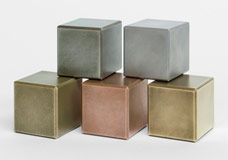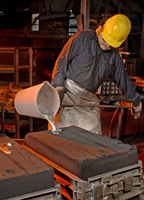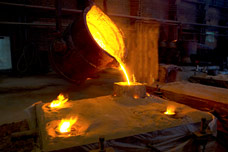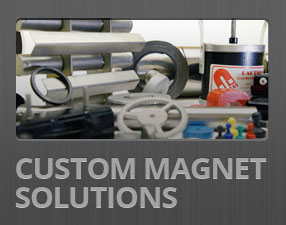
What's the Difference Between Ferrous and Nonferrous Materials
While some metals - think gold, silver and copper - are often used in their pure form, most metals that we commonly use are alloys, mixtures of one or more metals along with other elements.
Steel, brass, pewter, bronze and brass are the most common metal alloys. Many alloys are ferrous, containing iron, but some are not.
Non-Ferrous Metals
There are times when iron is not useful in metal.
If you want metal to be lightweight, non-magnetic, have high conductivity and corrosion resistance, the best results will not include iron. Non-ferrous metals tend to be more expensive than metals with iron and are extensively recycled.

Brass is the most common non-ferrous alloy and is a mixture of copper and zinc.
Copper has high conductivity and zinc is very resistant to corrosion. Aluminum is also non-ferrous. Though we think of aluminum as a pure metal, most of what we actually use is an alloy with manganese and some copper. It is very lightweight and can be easily shaped.
Ferrous Metals
Many of the metals we use on a daily basis are ferrous alloys.
The strength properties of iron, when combined with other materials, make it valuable for many purposes. Ferrous metals are used in construction materials, industrial manufacturing, medical devices, magnetic cores and more. The five most important ferrous metals are:
- Cast Iron - This is another carbon and iron alloy, with more carbon and less iron than the steels described above. It has high strength and wear resistance, but low tensile strength; in other words,
 it is brittle. Historically, cast iron had ornamental uses, but is used now for things like engine blocks and manhole covers.
it is brittle. Historically, cast iron had ornamental uses, but is used now for things like engine blocks and manhole covers. - Wrought Iron - So called because it used to be worked by hand, wrought iron is similar in composition to mild steel, but it also has slag - metal byproducts - included in the mix. Ornamental ironwork used to be made from wrought iron, but now it’s more likely to be formed from mild steel.
Place Your Order Today
That’s a basic tour through commonly used ferrous and non-ferrous metals. Though most of us don’t use those terms very often, we use products made from them as part of our daily lives.
Get in touch with us to determine the most appropriate magnet for your application and place an order.














